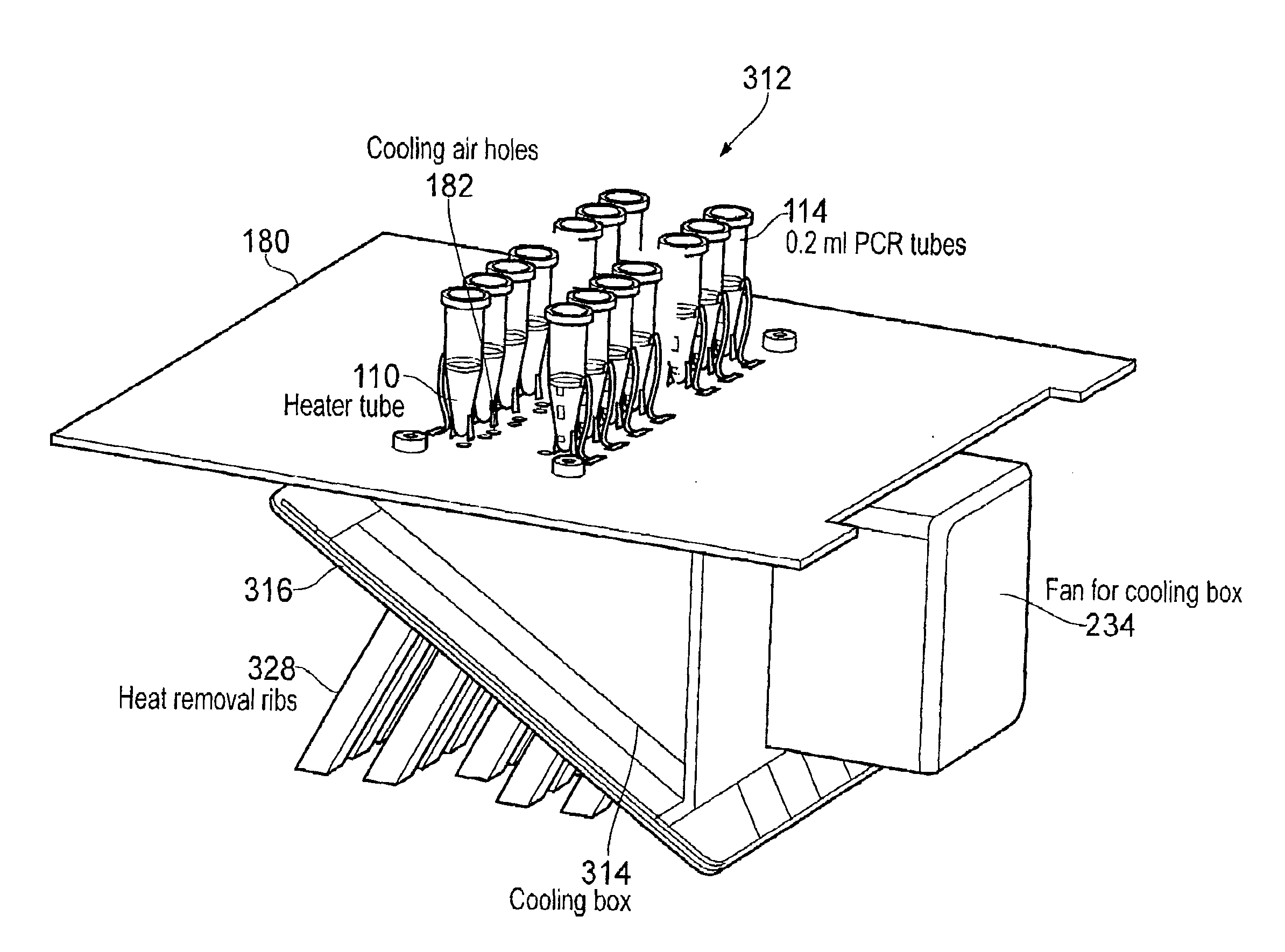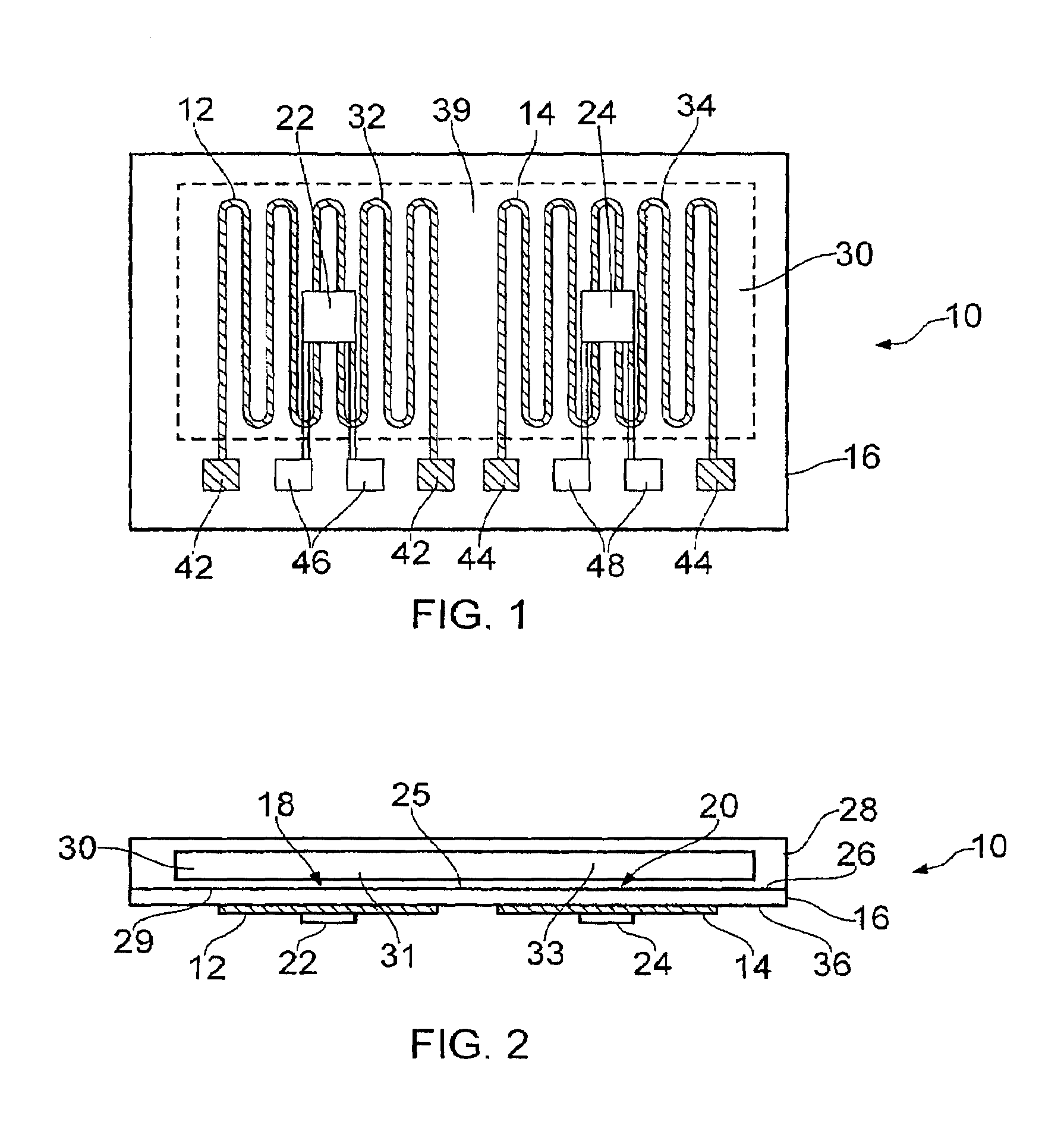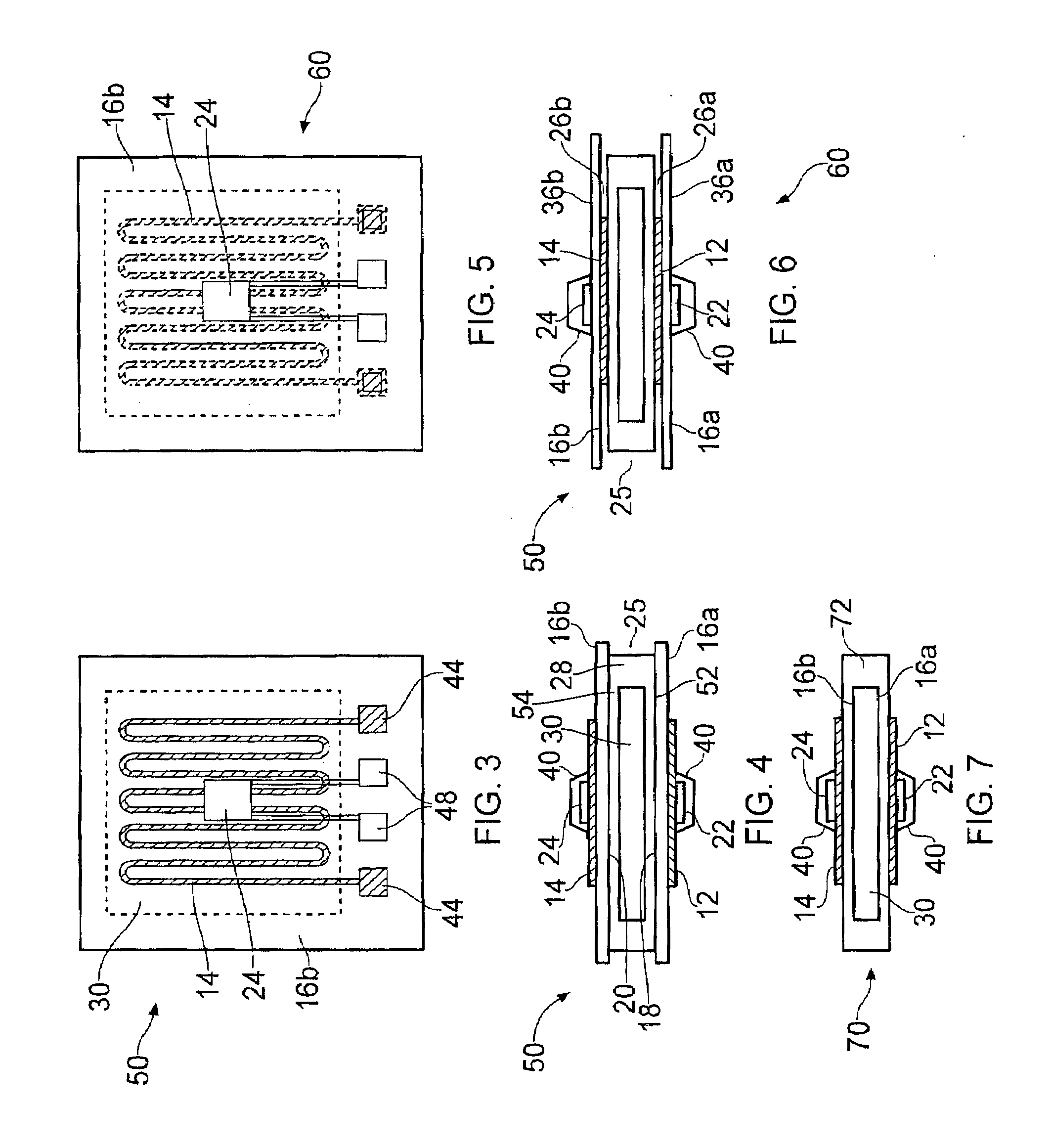Device And Method For Heating A Fluid Chamber
a fluid chamber and device technology, applied in the field of devices, apparatuses, systems and methods for heating a fluid chamber, can solve the problems of contaminating the liquid, not being easy to implement, and not being able to meet the needs of general applications, and achieves a large degree improved control of the rate of convection heat loss, and greater variation
- Summary
- Abstract
- Description
- Claims
- Application Information
AI Technical Summary
Benefits of technology
Problems solved by technology
Method used
Image
Examples
embodiment 10
[0266]Referring to FIGS. 1 and 2, an embodiment 10 of a heater device to heat a fluid chamber comprises: a first heater 12 and a second heater 14 each disposed on a substrate 16. The first heater 12 has a first heat transfer surface 18 and the second heater 14 a second heat transfer surface 20, each heat transfer surface 18 and 20 are configured to provide thermal contact with a common fluid chamber 30. A first temperature sensor 22 is in thermal communication with the first heater 12. A second temperature sensor 24 is in thermal communication with the second heater 14. It is apparent that the second heater 14 and second temperature sensor 24 are spaced apart from the first heater 12 and the first temperature sensor 24 by a gap 39. The first heater 12 is configured to heat a first region 31 of the fluid chamber; and the second heater 14 is configured to heat a second region 33 of the fluid chamber. In this embodiment the fluid container 28 may be separable from the heater device.
[02...
embodiment 60
[0281]Referring to FIGS. 5 and 6, in a further embodiment 60 in which features common with embodiments 10 and 50 have common numerals, the first heater 12 is provided on the first surface 26a of the first substrate 16a and the first temperature sensor 22 is provided on the second surface 36a within the perimeter of the heated area of the first heater, and the second heater 14 is provided on the first surface 26b of the second substrate 16b and the second temperature sensor 24 is provided on the second surface 36b within the perimeter of the heated area of the second heater. In this embodiment the substrates 16a, 16b provide a region between each heater and the corresponding sensor that has a higher thermal conductance than the thermal conductance of the fluid container plus its contents between the first and the second heaters.
[0282]In some embodiments for example as shown, the substrates are planar sheet elements having a first and a second major surface and a thickness between the...
embodiment 70
[0283]Referring to FIG. 7, in further embodiment 70 the substrates 16a, 16b form part of the walls of the fluid chamber 30, the heater device itself being mounted on the housing 72 of the fluid chamber.
[0284]Some embodiments as shown in FIGS. 1 to 7 may additionally comprise the following features: An insulation layer 40 may extend substantially over the heater and heated area of each heater as well as over the temperature sensors.
[0285]The device may comprise a first thermally conducting layer in thermal contact with the substrate and the first temperature sensor and a second thermally conducting layer in thermal contact with the substrate and the second temperature sensor. Such layers may be provided to increase the thermal conductivity between the sensor and the substrate and / or the heater. Such a layer may comprise for example a layer of copper.
PUM
| Property | Measurement | Unit |
|---|---|---|
| Temperature | aaaaa | aaaaa |
| Time | aaaaa | aaaaa |
| Flow rate | aaaaa | aaaaa |
Abstract
Description
Claims
Application Information
 Login to View More
Login to View More - R&D
- Intellectual Property
- Life Sciences
- Materials
- Tech Scout
- Unparalleled Data Quality
- Higher Quality Content
- 60% Fewer Hallucinations
Browse by: Latest US Patents, China's latest patents, Technical Efficacy Thesaurus, Application Domain, Technology Topic, Popular Technical Reports.
© 2025 PatSnap. All rights reserved.Legal|Privacy policy|Modern Slavery Act Transparency Statement|Sitemap|About US| Contact US: help@patsnap.com



